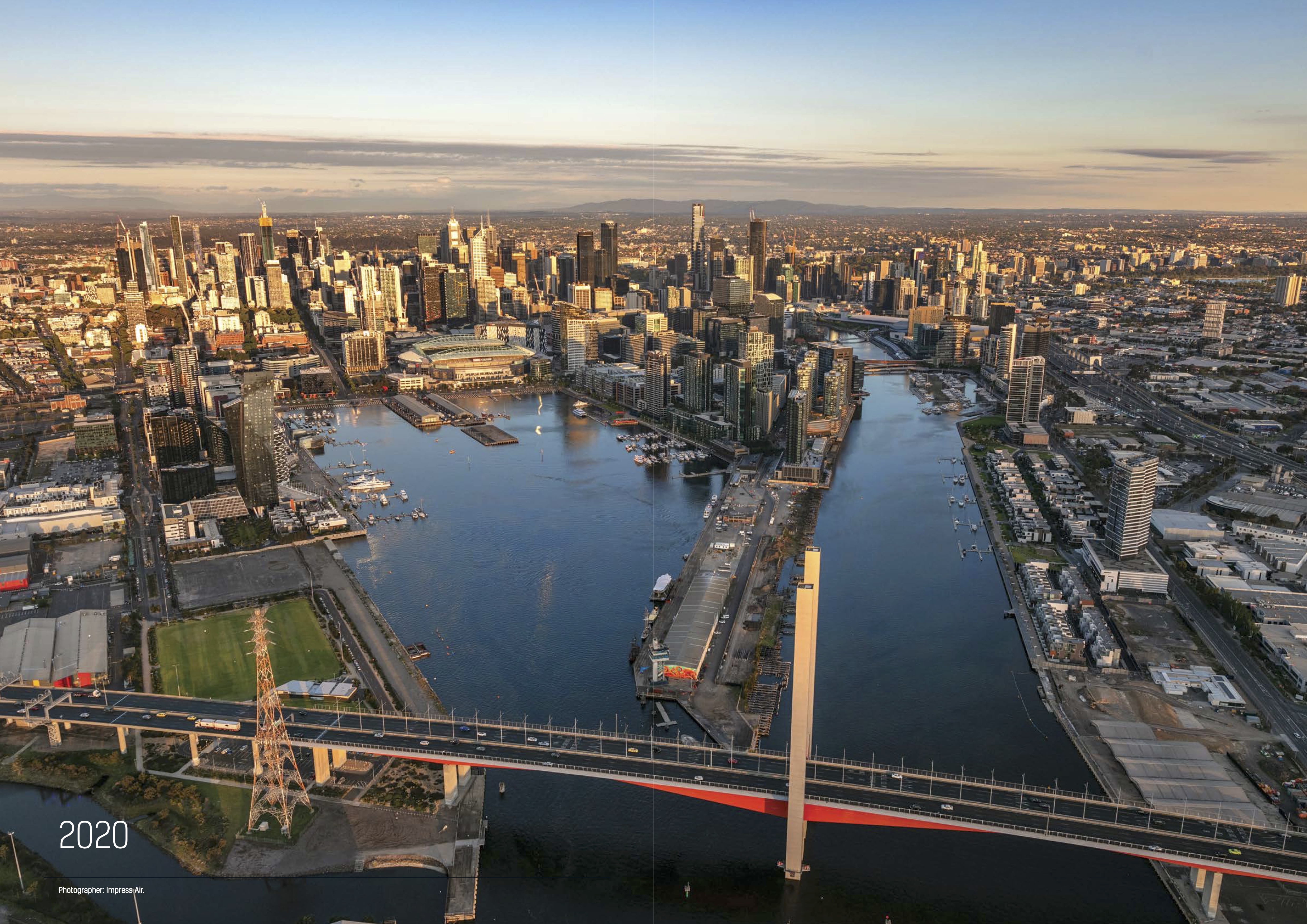Australian Hybrid Working Trends And Drivers

Part 2 in our Hybrid Working thought leadership series
Introduction
Globally and in Australia, office markets are reeling as CBD vacancy hits record highs. Meta stumping up AU$238m to exit their London lease (see here) is just the latest high profile office casualty of hybrid working. Whether we are in the office end times or experiencing a passing working from home (WFH) fad divides opinion, which is usually determined by the age, living arrangements and vested interests in the office market of either side.
To date most office prophecies have been based on personal perspectives, experiences and hopes rather than facts. In order to provide a more balanced understanding of what is happening in reality and what the future for offices is likely to be using objective facts and evidence, we have crunched an array of non-real estate data sourced globally and within Australia on the factors which influence the home versus office working balance. Our findings offer genuine insight to the murky and opinionated public discourse.
In three parts, we explore:
Part 1: Global hybrid working trends and drivers – exploring how regional and country level working preferences vary and primary reasons why. This has been published (see here).
Part 2: Australian hybrid working trends and drivers – illuminating the influencing factors of hybrid working down under which reveals a unique local twist on the global pattern. Based on these findings we unveil our WFH vulnerability index tool to assess office market resilience and risk at a city and sub-market level.
Part 3: City impacts and adaption strategies – here we offer advice for city governments, owners and other stakeholders on proactively responding to the transformational changes of hybrid working based on the insight contained within Parts 1 and 2.
If you think the hybrid working trend is nearly done, buckle up. Its implications are only just starting to manifest and they will be seismic. Our series will educate you on the factors which determine hybrid working impacts in any city or location, its implications and suitable ways for local government, city planners, asset owners, operators and occupiers to lean into the structural change to capture the best outcomes.
Within Australia, marked differences are observable in office re-entry rates across different cities (Figure 1). Overall the unweighted average office occupancy based on the latest available PCA was 65% of pre- pandemic levels across the major CBDs in February 2023. This trended downwards only marginally over the last year, suggesting WFH habits may be ingrained.
Office re-entry rates vary by CBD ranging from -19% of pre-pandemic levels in Perth CBD through to -54% and -53% in Canberra and Melbourne CBDs respectively. Furthermore whilst occupancy improved in nearly all markets in the 6 months to February 2023, it deteriorated further in Canberra CBD.
As with the global data considered previously, the differences in WFH propensity and momentum suggest that multiple factors determine office re-entry rates within each CBD.
Figure 1: Office Occupancy versus Pre-pandemic Level – Q1 23, Australia

The Commute: Not simplistic
Nationally, the CBRE Research survey indicates that the majority of Australians commute for less than 30 minutes (Figure 2). More granular data determines that workers in Australia’s main CBDs have significantly longer commutes, ranging from 50 minutes in Perth and Canberra to 62 minutes in Sydney and averaging 54 minutes nationally (Figure 2). The substantial discrepancy in these findings demonstrates the challenges in comparing different datasets which use different methodologies, input sources and survey samples. For the purposes of this analysis, we will use the localised CBD specific analysis.
In terms of commute cost, Sydney had the most expensive daily commute at $22 followed by Melbourne ($21) and Canberra ($20). The commute in Adelaide was cheapest ($17).
In relative terms, the spread of commute times and cost between Australians main CBDs is narrow, especially when weighted by office market size and average income. There is no clear outlier on cost or time. Comparing this to office re-entry data is inconclusive. Canberra has the joint shortest commute but the lowest office re-entry rate; Sydney has the longest and most expensive commute but only the fourth lowest re-entry rate; Perth has the cheapest and shortest commute and the highest re-entry rate.
Considering commute modality, Sydney and Melbourne have the highest proportion of commuters travelling by non-car means (Figure 3). This is consistent with their status as the largest Australian office markets which draw from large residential catchments served by extensive public transport and the most acute housing affordability challenges which pushes workers further out. Commutes in the other CBDs are car-dominant and counterintuitively based on global trends, there is a clear correlation between shorter commute times and higher car use.
Figure 2: Average Daily Commute Time and Cost, Australian CBDs

Figure 3: Journey-to-work, Trips by Car, Major Capital Cities

A Pandemic Census
This data was collected during the pandemic when some states were still subject to stay-at-home orders which may have impacted the results by over-recording car-based commutes. However, the relative position between CBDs is unlikely to differ. Again, this data is inconclusive, with no consistency between public transport patronage and office re-entry.
Each Australian CBD is entirely unique in its climate, spatial disruption and public transport network, unlike most markets in Europe which tend to be denser, concentrated in smaller radii, served by well-developed public transport and subject to similar climatic conditions. This is likely to create unique commuting trends in each Australian CBD, which may weaken the ability to use the commute as a predictor of WFH propensity in the way it can be applied in other global markets.
Living Arrangements: WFH relationship is not straightforward
Australians have the largest average dwelling sizes of all major developed countries (see Part 1 of the series). To consider average dwelling size at metropolitan level, the following data multiplies the average new build unit and house size in 2021-22 to the total number of units and houses in each greater capital city area based on ABS data then divides it by the total number of dwellings to determine an average floor area (Figure 4). Note that the average size of new dwellings does not fluctuate significantly in each greater capital city over time. Data on the proportion of total dwelling stock which are houses is subsequently overlaid.
There is wide variance in average dwelling sizes in each city ranging from 154 sqm in Greater Sydney to 199 sqm in Greater Adelaide. Cities with the smallest average dwelling size are dominated by units rather than houses. Contrary to the global trend, the data suggests a positive correlation between larger average dwelling sizes, higher proportions of houses and greater office attendance with Perth, Brisbane and Adelaide being ranked highest on all three of these metrics. We conclude living arrangements in Australia are thus less of an influencing factor based purely on the size and type of dwellings.
Figure 4: Average Floor Area, New Dwellings (sqm) & Proportion of Houses, Major Capital Cities
%2520%2526%2520Proportion%2520of%2520Houses%252C%2520Major%2520Capital%2520Cities.png)
Cultural Norms: Less important down under
Cultural norms are believed to be of considerable importance at a national level in determining the propensity of workers to WFH. However, within countries, cultural norms are generally consistent. As such, cultural norms are unlikely to influence the differences between office re-entry rates in Australian CBDs at an aggregate level, although they will play an important role for individual businesses and sub- markets based on their individual working cultures and demographic profiles.
Pandemic Experience: A key driver
Australian states adopted different protection measures at different times during the COVID-19 pandemic. Although the rules and restrictions in each state were individual, the number of days spent in lockdown is a consistent measure which can be used to explore state-wide pandemic experiences (Figure 5).
This data indicates the importance of the pandemic experience to Australian office re-entry rates. Melbourne was subject to some of the strictest controls globally, with a total of 263 days spent in lockdowns. Today it has nearly the lowest office re-entry rate, marginally ahead of Canberra, which also had a relatively extensive lockdown at 114 days. CBDs in the states which had the shortest lockdowns have the highest re-entry rates today.
It seems reasonable that WFH habits would be more ingrained in workers who spent longer during the pandemic working under such arrangements. Company processes would have adapted to ensure businesses continued to operate remotely without continuity or output loss. This erodes the need for an office relative to those companies that viewed WFH as a short-term temporary measure only. Workers would have become more habituated to a WFH lifestyle without the commute. They may have redesigned their dwellings accordingly to provide a better home office, invested in WFH technology and mentally come to view WFH as the default. This would make it harder to re-adapt back to hybrid working with more days spent in the office.
Figure 5: Number of Days in Lockdown, Major Capital Cities

Melbourne was subject to some of the strictest controls globally, with a total of 263 days spent in lockdowns. Today it has nearly the lowest office re-entry rate, marginally ahead of Canberra, which also had a relatively extensive lockdown at 114 days. CBDs in the states which had the shortest lockdowns have the highest re-entry rates today.
Employment Profiles: A major influencer
Each Australian CBD differs in its white-collar employment profile and industry speciality (Figure 6). Canberra is an outlier, with nearly two-thirds of white-collar jobs (63%) being in the public sector. Sydney has the highest proportion of finance and insurance workers (23% compared to an average across the cities of 15%). Information, media and tech jobs are proportionally larger in Sydney and Melbourne; admin and support roles are proportionally larger in Adelaide, Perth and Brisbane.
The public sector has some of the most generous hybrid working policies in Australia, and indeed globally. The
Commonwealth Government agreed with labour unions in July this year to uncapped WFH rights (Australian Financial Review, 2023). With surveys repeatedly showing that employers favour fewer WFH days per week than employees want, it is unsurprising that when workers are fully empowered to choose office re-entry rates are lowest in a public sector dominated market like Canberra.
Melbourne and Sydney have higher proportions of jobs in industries that are better suited to WFH; the opposite is true in Brisbane, Adelaide and Perth. Even in industries with higher WFH potential like information, media and telecoms, more detailed analysis of the census data indicates that the smaller Australian markets have higher proportions of sales roles within those industries and are less suited to WFH.
Employees in Sydney and Melbourne also earn more than those in other Australian CBDs and are more likely to be in senior management roles. Such employees have greater power to dictate when and how they work, which affords them more freedom to WFH. Studies show that workers employed in senior roles who are older, have established industry networks and are more likely to live in larger properties can WFH more easily than younger workers who tend to live in smaller, shared accommodation and have a greater need to build industry connections and learn from more senior peers. Thus, younger workers may have a greater desire to be in the office than senior leaders.
In conclusion, the employment profile of Australian CBDs is likely to have a significant influence on office re-entry rates.
Figure 6: White Collar Employment Profile, Major Capital Cities

The public sector has some of the most generous hybrid working policies in Australia, and indeed globally. The Commonwealth Government agreed with labour unions in July this year to uncapped WFH rights.
Office Appeal: Workers expect much more
To consider the extent to which the offices across Australian CBDs differ in their appeal to workers, the proportion of prime space (premium and Grade A combined) has been used as a proxy for quality (Figure 7). Contrary to the expectation based on global trends, markets which greater volumes of prime supply are also those with the lowest entry rates.
In our view, a number of factors explain this finding. Firstly, many employees and occupiers are shunning large, generic office floorplates which lack unique character. As highlighted under the global trends section, the micro-location of an office is a critical determinant of its appeal to workers. Expansive, single-use office destinations without a range of uses do not align with what modern workers want. Arguably Canberra, Melbourne and Sydney have more large- format generic prime space concentrated in periphery CBD locations relative to other CBDs
– Melbourne’s Docklands for example or Sydney’s Barangaroo. These submarkets lack the truly mixed-use amenity offer found organically within older CBDs and contain office space more aligned to pre-COVID trends which sought primarily to maximise occupier efficiency rather than being focused around employee experience.
Secondary, larger CBDs have larger suburban office markets too. These provide greater choice for office workers who may have the ability to travel to an office locally rather than commute into the CBD. It dilutes the concentration of offices and other supporting uses which would otherwise be focused on the CBD, Office space in Brisbane, Perth and Adelaide is more heavily concentrated in the CBD so it is denser. Workers have fewer alternative choices for their in-office days and these CBDs have a greater array of mixed-uses which are more appealing to workers.
Figure 7: Proportion of Prime Office Stock, Australian CBDs

Conclusion: Australian trends are unique
WFH drivers within Australia appear to differ in some crucial ways from those observed globally. That makes it harder to draw overarching conclusions which can be universally applied – each CBD has its own set of influences which interact in complex ways to determine office re-entry rates. The commute and living arrangements in Australia, for example, are less important in influencing WFH propensity than they are in other countries.
Canberra is an outlier. Using global benchmarks it should have high office re-entry rates given its relatively short average commutes, small average dwelling sizes, high proportion of units and high provision of prime grade stock. However its high reliance on public sector employment with which the Australian government has agreed extremely generous WFH policies appears to outweigh the other factors which push workers towards the office in other global cities.
Whilst not quantified here, we speculate that within Australia the localised quality of residential areas has an important bearing on WFH preferences. For workers living in a seaside suburb or in a rural location, for example, the appeal of spending more time locally rather than commuting to the CBD will be stronger than those in the more in- descript, dense neighbourhoods which characterise many other large cities globally like London, Paris and New York.
In Australia, smaller CBD markets are better at attracting office employees more frequently despite the larger average dwelling size of typical workers, greater provision of housing and relatively lower public transport connectivity by comparison. We speculate this may reflect high acceptance of car-based commuting in Australia, the micro-locational appeal of smaller markets which have more concentrated office provision combined with a broader mix of non-office uses, and critically a large variance in state-level lockdown severity which has permanently altered WFH preferences.
WFH Vulnerability Index
Using these metrics, we have created a WFH vulnerability index to assess how susceptible office markets are to WFH trends. To create this, the main WFH drivers from the above analysis are distilled into a model, with weights assigned to each based on their relative importance in an Australian context.
The model benchmarks Australian CBDs against each other. For each metric we have rated the highest scoring (i.e. most WFH vulnerable) city as a 10, and positioned other CBDs relative to it 8 based on their individual scores on the same metric. Scores for each were then recalibrated based on the weightings to provide an overall WFH vulnerability rating (Figure 8). This does not replicate the latest office re-entry rates exactly, but it is considered a suitable approximation based on our analysis and how office re-entry rates my develop over time. Ultimately though, given the complexity of the different influencing factors providing a single source of truth is impossible – models can only ever provide an indication to help guide strategy.
The model can be applied at a sub-market level within cities where it will provide the greatest insight into how office occupier demand is likely to change and why. These results can inform proactive actions ahead of anticipated occupier demand change to improve office markets and make them more successful by enhancing drivers on which they score poorly, or manage their transition to alternative uses if their viability is likely to be undermined in the long-term term due to the structural shift towards hybrid working.
Figure 8: WFH Vulnerability Index: Australians CBDs


References
Australian Bureau of Statistics (ABS) (2023a). “Average Floor Area of New Residential Dwellings”. Available from: https:/www.abs.gov.au/articles/average-floor-area-new-residential-dwellings
Australian Bureau of Statistics (ABS) (2023b). “Labour Force, Australia. ABS”. Available from: https:/www. abs.gov.au/statistics/labour/employment-and-unemployment/labour-force-australia/aug-2023
Australian Bureau of Statistics (ABS). (2021). “2021 Australia, Census – Community Profile”.
AEW (2021). “How Resilient Are European Offices To Working From Home?”. Available from: https:/
www.aew.com/site-assets/documents/AEW-Research-Report-Mar-21-V9.pdf
Australian Financial Review (2023). “Public sector agrees to uncapped WFH days”. Available from:
Australian Commonwealth public sector agrees to uncapped work-from-home days (afr.com)
BBC (2023). “Why are CEOs still so intent on taking worker attendance”. Available from: Why are CEOs still so intent on taking worker attendance? – BBC Worklife
Blavatnik School of Government, University of Oxford, Australian National University and Centre for Social Research & Methods (2022). “Variation in policy response to COVID-19 across Australian states and territories BSG-WP-2022/046”. Available from: https:/www.bsg.ox.ac.uk/sites/default/files/2022-06/ BSG-WP-2022-046_1.pdf
Bloomberg (September 2022) “Return-to-Office, a $1.3 Trillion Problem: Global Perspectives”. Available from: What the Return to Office Looks Like Globally – Bloomberg
Buildworld (January 2023). “The Average Home Size in Capital Cities, Based on Local Listings”. Available from: The Average Home Size in Capital Cities, Based on Local Listings | Buildworld
Carmeli, A., & Freund, A. (2002). “The relationship between work and workplace attitudes and perceived external prestige”. Corporate Reputation Review, 5(1), pp. 51–68.
CBRE Research (November 2022). “The Global Live-Work-Shop Report 2022”. Available from: Cross- Generational Attitudes That Will Transform the Built Environment | CBRE
CBRE IM. (2022). “Global office report – A two speed market?”. Available from: https:/www.cbreim. com/-/media/project/cbre/bussectors/cbreim/insights/articles/global-office-report-a-two-speed- market/cbre-im-global-office-report—feb-2022.pdf
Chen H, Shi L, Zhang Y, Wang X, Jiao J, Yang M, Sun G. (2021). “Response to the COVID-19 Pandemic: Comparison of Strategies in Six Countries”. Front Public Health.
Elbing, A. O., Gadon, H., & Gordon, J. R. (1975). “Flexible working hours: The missing link”. California Management Review, 17(3), pp. 50–57.
Executive Networks (2023). “The 2023 Future of Working and Learning Report”. Available from: https:/ www.executivenetworks.com/the-2023-future-of-working-and-learning-report
Financial Times (2023). “Amazon tracks and targets US staff over failure to work 3 days in office”. Available from: Amazon tracks and targets US staff over failure to work 3 days in office | Financial Times (ft.com)
Heuvel, M. V. D., Demerouti, E., Bakker, A. B., & Schaufeli, W. B. (2010). “Personal resources and work engagement in the face of change”. In Houdmont J. & Leka S. (Eds.), “Contemporary occupational health psychology: Global perspectives on research and practice” pp. 124–150.
Himawan, KK (2020). “The Single’s Struggle: Discovering the experience of involuntary singleness through gender and religious perspectives in Indonesia”. The Family Journal, 28(4), pp. 379–389
Himawan KK, Helmi J, Fanggidae JP. (2022). “The sociocultural barriers of work-from-home arrangement due to COVID-19 pandemic in Asia: Implications and future implementation”. Knowledge and Process Management.;29(2): pp. 185–93.
Hofstede Insights (2021). “Country comparison”. Available from: https:/www.hofstede-insights.com/ country-comparison/
Hofstede, G. H. (2001). “Culture’s consequences: Comparing values, behaviors, institutions, and organizations across nations”. SAGE
Hubble (2023). “The Problem Isn’t The Office – It’s The Commute”. Available from: https:/hubblehq.com/ blog/impact-of-commute-time-on-work-preferences
JLL (2023). “The Future of the Central Business District”. Available from: jll-the-future-of-the-central-business-district-may-2023-final.pdf
KPMG. (2023). “Working from home will be history in three years’ time, CEOs predict”. Available from:
CEOs confident in growth despite economic challenges – KPMG Australia
Macreadie, I. (March 2022). “Reflections from Melbourne, the world’s most locked-down city, through the COVID-19 pandemic and beyond”. Available from: Reflections from Melbourne, the world’s most locked- down city, through the COVID-19 pandemic and beyond (csiro.au)
Make In Work (2022). “7 Industries With a Growing Demand for Remote Workers”. Available from: https://www.makeuseof.com/industries-with-demand-for-remote-workers/
McKinsey & Company (2018). “Elements of success: Urban transportation systems of 24 global cities”. Available from: Urban-transportation-systems_e-versions.ashx (mckinsey.com)
McKinsey & Company (2020). “What’s next for remote work: An analysis of 2,000 tasks, 800 jobs, and nine countries”. Available from: The future of remote work: An analysis of 2,000 tasks, 800 jobs, and 9 countries | McKinsey
Oxford Economics (2023). “Global Databank”. Accessed 17 September 2023
Property Council of Australia (March 2023). “Office Occupancy – February 2023”. Available from: Office Occupancy – February 2023 – Property Council Australia
Property Council of Australia (2023). “Office Market Report – July 2023”.
Raghuram, S., & Fang, D. (2014). “Telecommuting and the role of supervisory power in China”. Asia Pacific Journal of Management, 31(2), pp. 523–547.
Real Insurance (November 2022). “The Real Australian Commute Report”. Available from: the-real- australian-commute-report-whitepaper.pdf (realinsurance.com.au)
Shrink that Footprint (2023). “How Big is a House? Average House Size by Country – 2023”. Available from: https:/shrinkthatfootprint.com/how-big-is-a-house/
The Economist (2023a). “Texas’s latest boom is its biggest yet”. Available from: Texas’s latest boom is its biggest yet (economist.com)
The Economist (2023b). “The working from home illusion fades”. Available from: The working-from-home illusion fades (economist.com)
The Sydney Morning Herald (2023a). “Same workload, same pay, longer weekend. Is Australia ready for a four-day week”. Available from: Is a four-day work week in Australia possible? (smh.com.au)
The Sydney Morning Herald (2023b). “Working from home will be history in three years’ time, CEOs predict”. Available from: Is a four-day work week in Australia possible? (smh.com.au)
Wikipedia (2023). “COVID-19 lockdowns”. Available from: https:/en.wikipedia.org/wiki/COVID-19_ lockdowns
World Economic Forum (2023). “The world’s biggest trial of the four day work week has come to an end. These are the results”. Available from: UK four day work week trial: What are the pros and cons? | World Economic Forum (weforum.org)
World Population Review (2023). “Lockdown by State”. Available from: https:/worldpopulationreview. com/state-rankings/lockdown-by-state
Related posts
Dive deeper into insights that matter to you.

The Election and Housing: Ireland’s Wake-Up Call for Oz

Australia’s Visitor Economy Rebounds: Insights from 2024-2025 ABS Data

Australian Data Centres: The State of Play for this Critical Sector

30 Years On: Has Docklands Been A Success?
Make smarter decisions
Get in touch with the Team to get an understanding of how we transform data into insightful decisions. Learn more about how Atlas Economics can help you make the right decisions and create impact using our expertise.
